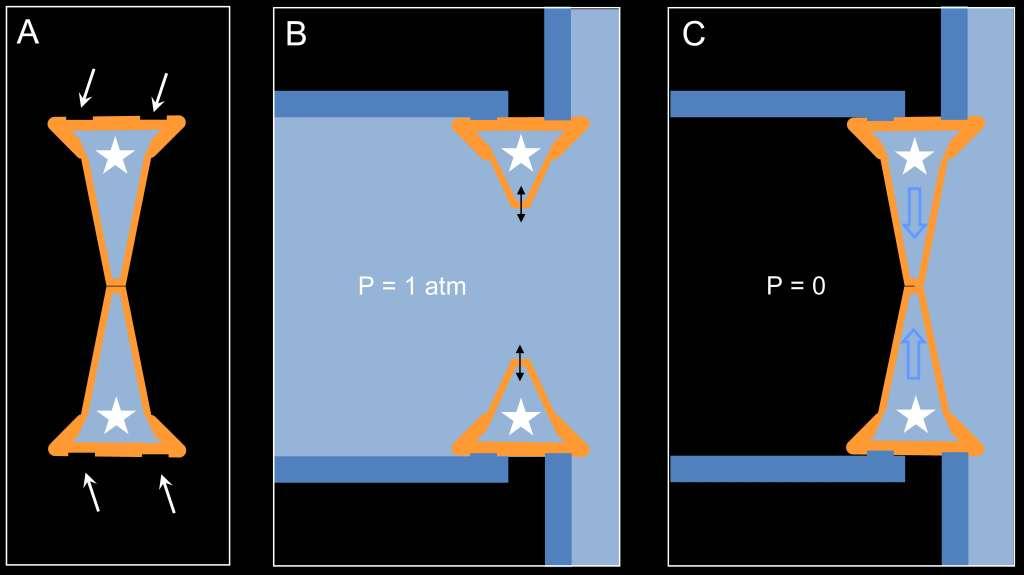| < Doors > |
| Using superlatives is dangerous. "The most important feature..."; the "most precious part..."; the technical equipment "at the heart of" my space station - maybe no single item should be put on the front stage. Most important is the harmonic interplay between all single components. Nevertheless, in terms of general security of this space habitat, the construction and functional principle of the doors will be of particular importance. Mechanically, they are quite demanding, and I wonder if such doors presently exist. |
| When I recently observed the ISS crew opening the air lock to rescue poor signore Parmitano, I saw a sliding door requiring much free space at the side it was shifted to. My 3-m-habitat module would even have 8 large circular openings, and each of them should be secured by a door. Although there would be enough room to slide up all of them, this would (1) waste precious room, and (2) complicate automatic emergency closures. Therefore I prefer circular diaphragm shutters with an in-built pressurized chamber (asterisk in figures below) guaranteeing fast closure in case of pressure collapse. |
| To limit loss of atmosphere in case of a leak, the leaky section has to be isolated from the rest of the station as fast as possible. It appears dangerous to me to depend on electricity for this manœuvre. E.g., a meteorid impact might not only produce a leak, it might also interupt the supply with electricity to the affected sections. Therefore, I prefer an in-built pneumatic mechanism closing the door automatically, if at one or both sides pressure falls below a critical value. Nevertheless, the door still can be opened by applying moderate force, but it would fall back into the default closed state if no longer held open by hand. |
| These doors would not only serve closing and isolating functions, they would also serve as connectors to other building components. They would present an outer indention (arrows in A, below) running around their front and their back side. Around this groove, the components of the spherical habitat would be inserted during the erection of the station, as for the components of the connecting tubes on the other side. Thus, it will be impossible to build up the station without having doors between all functional elements. Also the balloons can only be connected to a habitat by a door. |

| The doors do not contain any electric parts. As default state they stay open at a preselected pressure (usually 1 atm as in B of the figure, but e.g. the station could also be run at 0.2 atm pure oxygen), but can be closed (and opened again) by hand (they will stay as you leave them; black arrows in B). So if you want to change any door openings, you got to get their and do it by hand. In case of pressure collapse, the other default state sets in and the door closes fast (C). Once pressure is restored on both sides, the door can be opened again easily (against no force) and stays open as long as desired. |
| I'm not aware of any commercially available doors realizing these construction principles. I'm also not quite sure if a door of reasonable size can be created that way. The blades of the shutter and the pneumatic chamber require some volume around the opening, so my 1-m-cross section will result in a lumen of considerably lower size, perhaps not enough for confortable passage. In that case, the cross section of the openings could be increased accordingly, with consequences for size and form of the other components. |
| Doors are never locked. They don't even have a key hole. Why should they? Do we fear strangers that might intrude? Certainly not. This is the advantage of living on a space station. We will also need no passwords for the computers. It would be just a waste of time and a source of danger to have to think about magic words. In these respects, living on a space station may be closer to innocent paradise than living on Earth with its more realistic social background. Hopefully, it will also be possible to raise plants without being endangered by pests. |
| MB 8/13 |
| next: A quest for space ship plants back to: Lessons from Euclid overview |